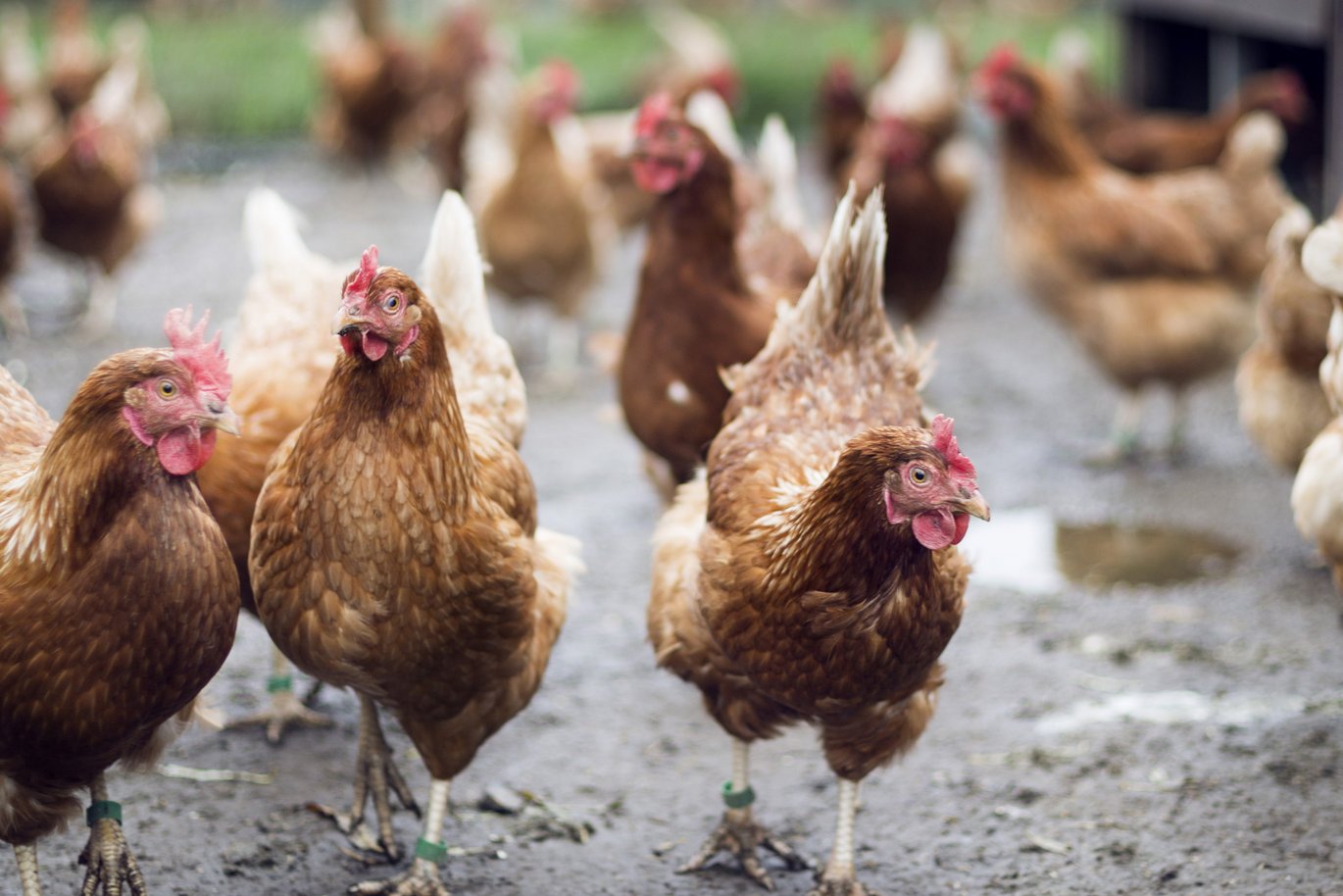Choosing egg layer hybrids for organic egg production
A new study from Aarhus University shows that there may be major differences in how well different egg layer hybrids adapt to challenges in the surrounding environment. Therefore, there are many parameters to take into account when choosing a hybrid for extensive production systems to ensure good welfare.

Modern commercial hybrids of egg layers have been selected primarily for egg production and feed efficiency, and not according to behavioural properties. This is due to the fact that most egg layers have been housed in cages. But with a greater consumer focus on welfare, concurrent with the passing of a ban on caged egg production in Denmark from 2023, more and more egg producers are transitioning to cage-free systems such as organic egg production, where hens have access to an outdoor area.
There may be many health and welfare benefits to giving egg layers access to outdoor areas. "However, these benefits depend on whether the hens choose to use the outdoor areas and how good they are at adapting to any stressful situations," explains researcher at the Department of Animal and Veterinary Sciences at Aarhus University, Kaitlin Elizabeth Wurtz.
Study of two egg layer lines
According to Kaitlin E. Wurtz, hens that are suited for organic egg production systems must be able to adapt to new and dynamic environments and, at the same time, be able to maintain a sufficient production level: "We have therefore examined how adaptive two hybrids of egg layers, Dekalb White (DW) and Bovans Brown (BB) are for organic egg production. We have had particular focus on the behaviour of the two hybrids when they are in outdoor areas, but also on a number of other measurable parameters for welfare, egg production and egg quality," she explains.
In the trial, a total of 1200 organically housed hens from the two lines were distributed across 12 flocks with 100 hens in each. The hens' use of outdoor and indoor areas, weather conditions, vegetation cover, egg production and quality, mortality and a number of other clinical welfare indicators were registered.
Bovans Brown hens did better
“Our results showed that the BB-hens did significantly better or just as well as the DW hens on all targets, with the exception of egg production. While a larger proportion of the DW hens used the outdoor area early in the study, BB hens moved further away from the house, which was also seen in the greater wear and tear of vegetation in the BB hens' outdoor area than in the DW hens' outdoor area," says Kaitlin E. Wurtz.
A comparison of the health and welfare parameters examined showed that the BB hens had:
- improved plumage conditions
- improved footpad health
- fewer comb wounds and
- lower mortality rates.
A comparison of the production parameters examined showed:
- that the BB hens had improved egg quality measures and fewer floor eggs
- that the DW hens started egg laying earlier and
- that the DW hens had a higher egg production.
Take the hens' behavioural properties into account in practice
When choosing a genetic strain for organic production, according to Kaitlin E. Wurtz, it is necessary to take the behavioural attributes into consideration in order to ensure good animal welfare. For example, hens with increased fearfulness may be less likely to use the designated outdoor area. This means that they may not enjoy the potential benefits that the outdoor area offers. This includes, for example, a more varied diet, improved bone and leg strength as well as improved health and welfare.
"If the DW strain is selected for use in organic systems, it is therefore important that the specific behavioural characteristics of hens belonging to this hybrid are taken into account in management practice. For example, shelters in the outdoor area seemed to be utilized more by the DW hens, and may aid in encouraging these birds to move outdoors," concludes Kaitlin E. Wurtz.
Suppmentary information | |
| We strive to ensure that all of our articles comply with Universities Denmark’s principles for good research communication. Therefore, we have supplemented the article with the following information: | |
Funding | This work was part of the project “FreeBirds: Optimising the use of the free-range as the key to improve organic chicken production” under Coordination of European Transnational Research in Organic Food and Farming System Cofund (CORE Organic Cofund) by the European Union’s Horizon 2020 research and innovation programme under grant agreement No. 727495. Funding for the Danish part was granted by Innovation Fund Denmark, grant number 7109-00005B. |
Collaborators | Anja Brinch Riber, ANIVET, AU Karen Thodberg, ANIVET, AU Leslie Foldager, ANIVET, AU Atefeh Berenjian, Department of Animal and Poultry Science, College of Aburaihan, University of Tehran, Iran Fernanda Tahamtani, Animalia AS, Norwegian Meat and Poultry Research Centre, 0513 Oslo, Norway |
Learn more | |
Contact | Postdoc Kaitlin Wurtz, Department of Animal and Veterinary Sciences, Aarhus University. E-mail: kwurtz@anivet.au.dk |
